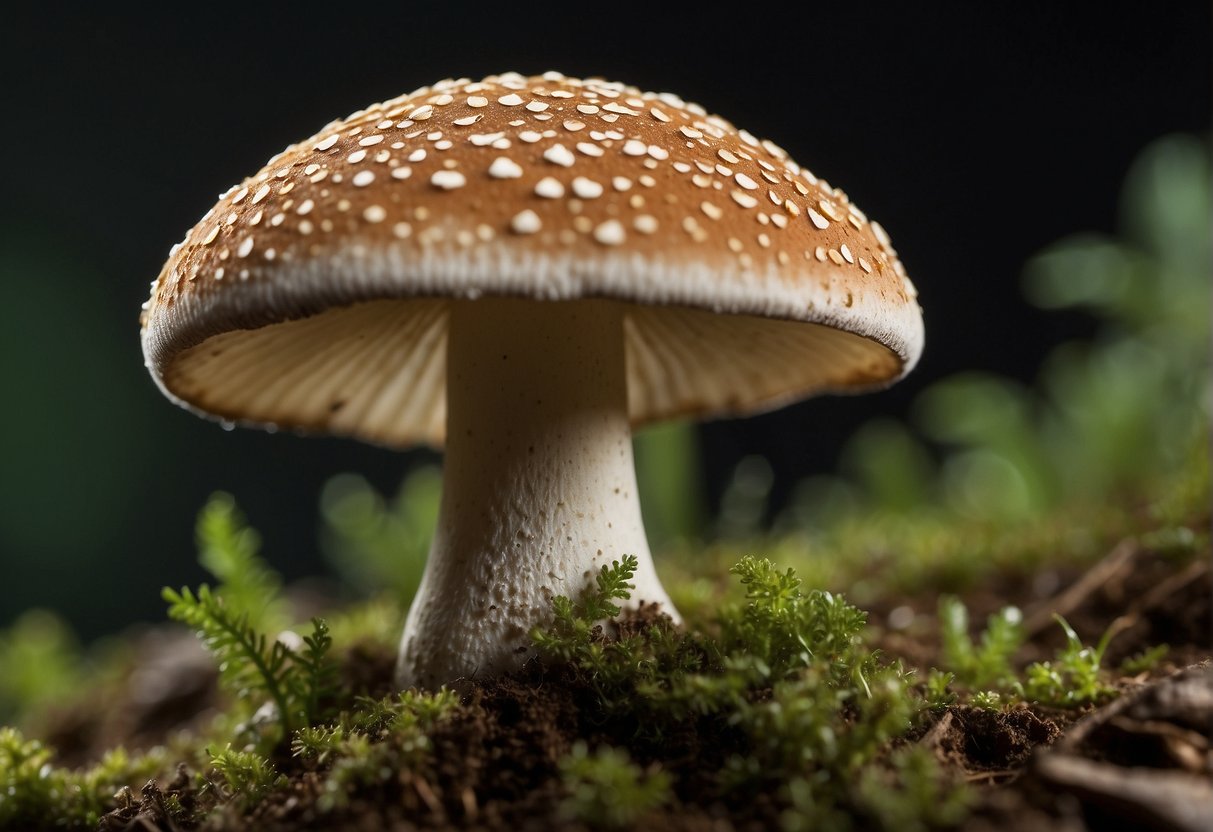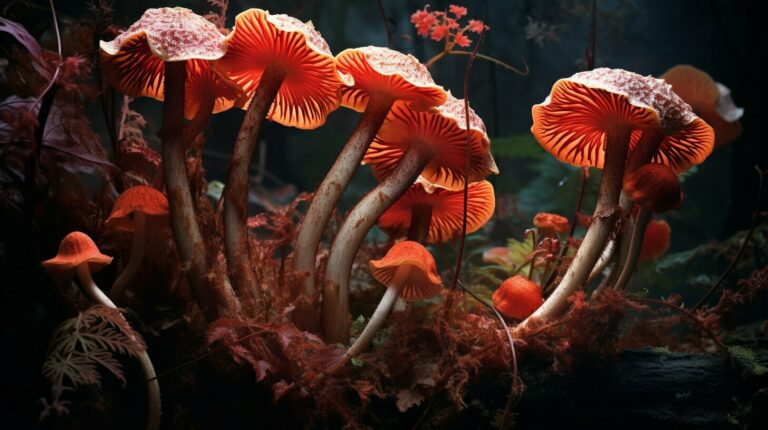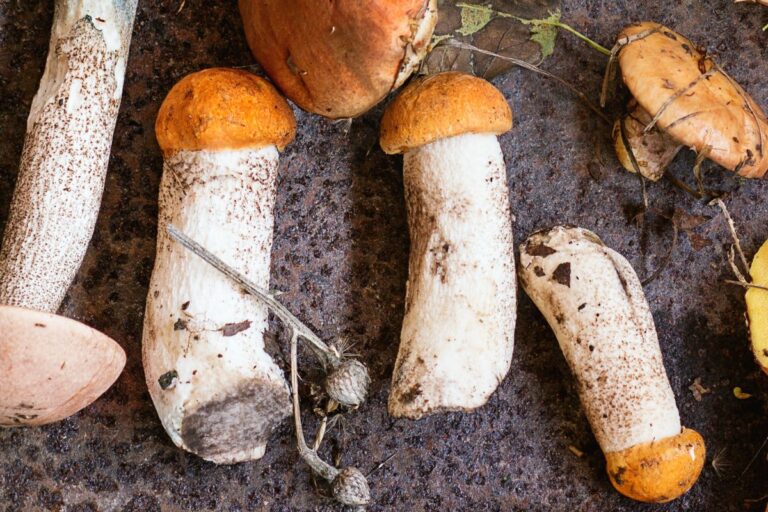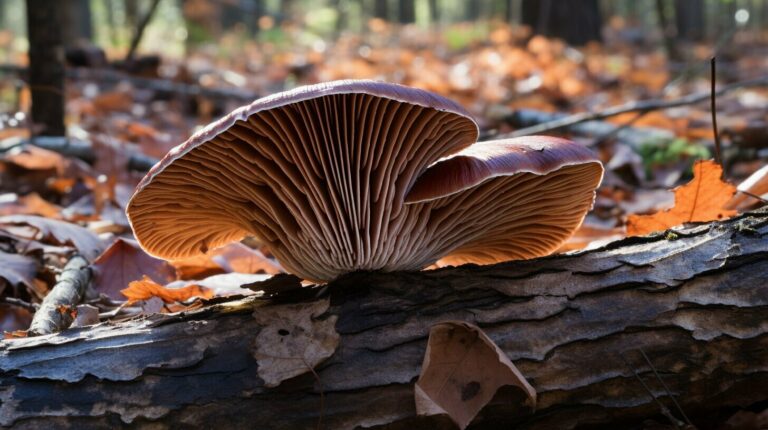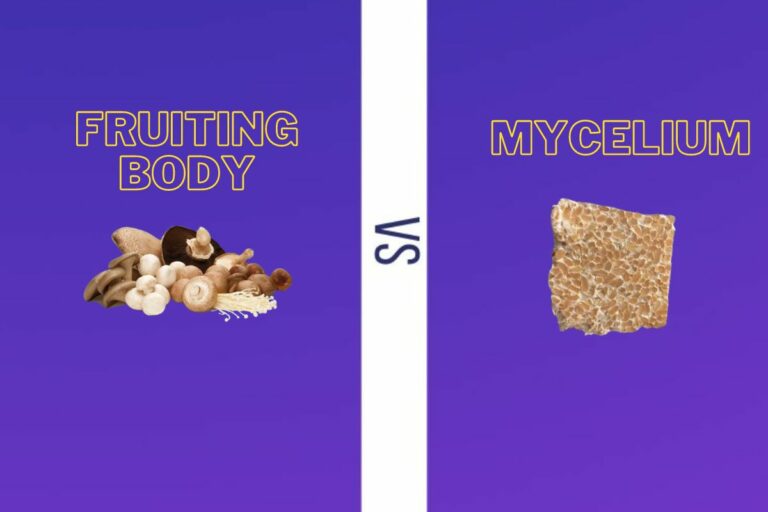As you explore the fascinating world of fungi, particularly mushrooms, you may wonder how these organisms sustain themselves without the apparent greenery most plants possess for photosynthesis. The key to their nourishment lies in their underground network, the mycelium, which is a white, thread-like structure sprawling beneath the soil. This mycelium is responsible for absorbing nutrients, often by breaking down organic matter or forming symbiotic relationships with plant roots. The mycelium is essentially a mushroom’s lifeline, enabling it to grow and thrive in various environments.
Understanding the nutrition of mushrooms also involves recognizing their role within broader ecological systems. Mushrooms are decomposers, meaning they play a crucial part in nutrient cycling, breaking down dead organic material and returning valuable nutrients to the soil. Unlike plants that rely on sunlight to create their food, mushrooms digest organic substrates, resulting in the release of energy and nutrients that are vital to their growth. This process is facilitated by enzymes secreted by the mycelium, which allow the mushroom to convert complex organic compounds into simpler forms that are easier to absorb.
When considering mushroom cultivation or simply admiring these organisms in the wild, remember that their unique way of feeding is not just a biological curiosity but a testament to the incredible diversity of life strategies in nature. Your appreciation for mushrooms might grow deeper as you learn more about their intricate relationship with the ecosystem, which is as nourishing for the environment as it is for the mushroom itself.
Mushroom Biology and Structure
Table of Contents
In exploring how mushrooms sustain themselves, you will uncover the critical roles of the mycelium and the complex processes of spore-based reproduction.
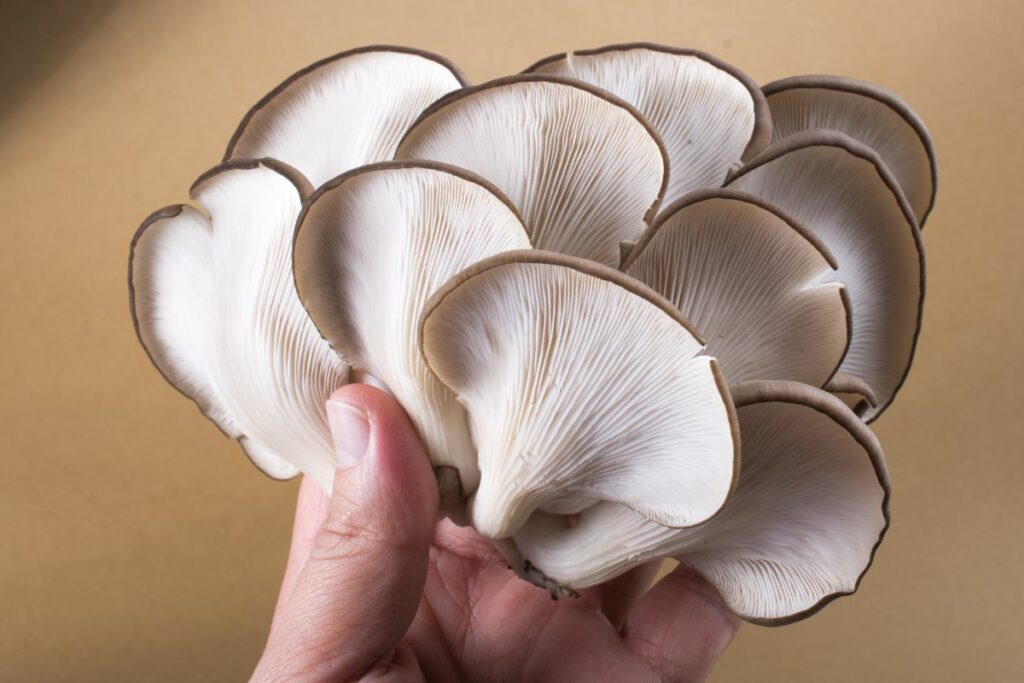
Mycelium: The Fungal Network
Mycelium is the vegetative part of a fungus, consisting of a network of hyphae. Imagine it as the foundation of a mushroom’s life, often hidden from your view, thriving within soil or decaying organic matter. This intricate matrix absorbs nutrients, effectively sustaining the mushroom. Remarkably, a single cubic inch of soil could contain miles of these infinitesimal hyphae threads, each contributing to the growth and nutrition of fungi.
Understanding Spores and Reproduction
Spores, the reproductive units of fungi, play a pivotal role in mushroom propagation. They are to mushrooms what seeds are to plants. Typically, spores are formed on the gills located underneath the mushroom’s cap. These gills are protected by a structure known as an annulus or ring, which is the remnant of the veil that once enclosed the mushroom’s immature cap. Upon maturity, spores detach and disseminate, carried by wind or wildlife, to find new locations where they can germinate and develop into new mycelium networks. Through this reproduction process, the cycle of life for mushrooms continues, ensuring their survival and distribution across various ecosystems.
Mushroom Growth Cycle
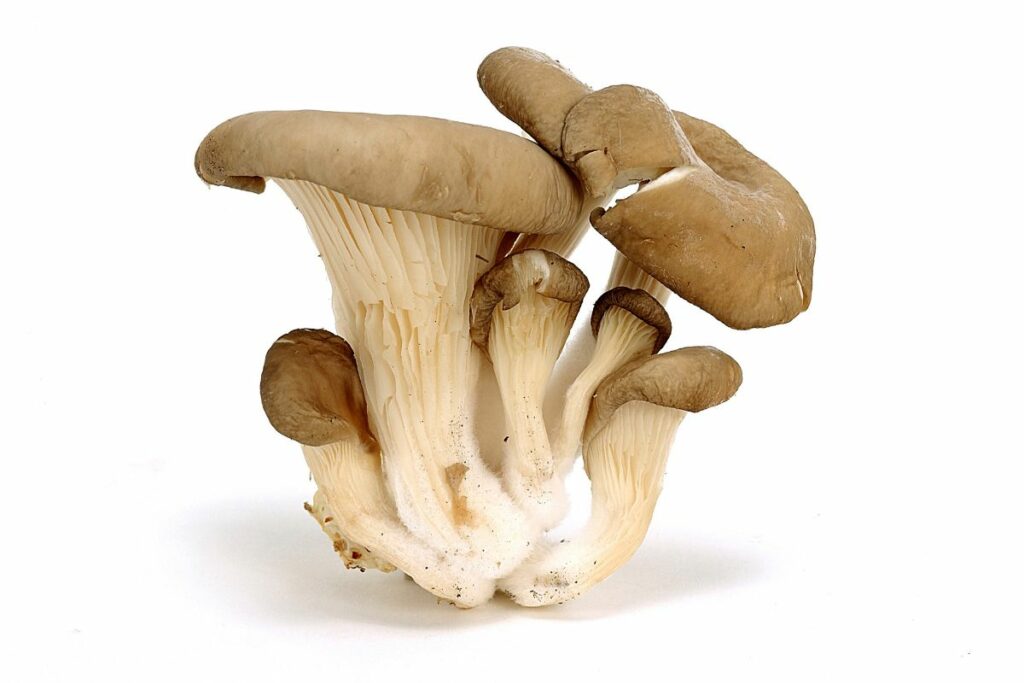
| Stage | Description |
|---|---|
| 1. Spore Germination | Spores, the reproductive cells, germinate to form mycelium (fungus’ vegetative part) |
| 2. Mycelium Growth | Mycelium expands, forming a network of thread-like structures underground or within a substrate |
| 3. Primordia Formation | Tiny pin-like structures, called primordia, develop from the mycelium |
| 4. Pinning | Primordia mature into pins, the early stage of mushroom formation |
| 5. Mushroom Formation | Pins develop into mature mushrooms with caps and stems |
| 6. Spore Release | Mature mushrooms release spores for reproduction |
| 7. Senescence | Mushrooms age, and the lifecycle concludes |
Understanding the stages of mushroom growth is paramount in cultivating these fascinating fungi. Each step in their lifecycle, from spore germination to the development of a mature fruiting body, is intricately tied to environmental conditions.
From Spores to Mycelium
Mushrooms begin their lifecycle as spores—tiny, dust-like particles capable of developing into a mature fungus. When conditions are right, spores germinate and produce hyphae, which are thread-like structures. As hyphae grow and intertwine, they form a network known as mycelium. This mycelium is the vegetative part of the fungus, aggressively colonizing the substrate the material in which it grows, such as wood or soil.
Fruiting Body Development
Once the mycelium has fully colonized the substrate and environmental conditions are favorable, mushroom development progresses to the next phase. This is when the fruiting body, which is the actual mushroom, begins to form. It is made up of a cap, stem, gills or pores, and sometimes a ring. The cap and stem are the most visible parts as they push through the substrate.
Optimal Conditions for Growth
Your success in growing mushrooms hinges on providing optimal conditions. Temperature and humidity are particularly crucial for mushroom growth. Each mushroom species has its own ideal range, but most require a high humidity level to prevent drying out and a moderate temperature to stimulate growth. When these conditions are met, along with proper light and fresh air exchange, your mushrooms will grow and eventually be ready for harvest.
Mushroom Nutrition and Substrates
| Nutrient | Amount |
|---|---|
| Calories | ~22 |
| Protein | ~3 grams |
| Carbohydrates | ~3 grams |
| Dietary Fiber | ~2 grams |
| Total Fat | ~0.3 grams |
| Saturated Fat | ~0 grams |
| Sodium | ~5 milligrams |
| Potassium | ~300 milligrams |
| Vitamin C | ~1 milligram |
| Vitamin D | Varies by exposure to sunlight; typically low |
| Calcium | ~3 milligrams |
| Iron | ~0.5 milligrams |
| Magnesium | ~9 milligrams |
| Phosphorus | ~86 milligrams |
| Zinc | ~0.5 milligrams |
| Copper | ~0.1 milligram |
| Manganese | ~0.1 milligram |
| Selenium | ~5 micrograms |
| Folate | ~6 micrograms |
| Niacin | ~3 milligrams |
| Pantothenic Acid (B5) | ~0.5 milligram |
| Vitamin B6 | ~0.1 milligram |
| Riboflavin (B2) | ~0.2 milligram |
| Thiamine (B1) | ~0.1 milligram |
Mushroom growth largely depends on the quality of the substrate chosen, which provides essential nutrients and organic matter. The enzymes released by mushrooms break down this matter into usable food to fuel their development.
Role of Organic Matter in Nutrition
Organic matter serves as the cornerstone of mushroom nutrition. Your choice of substrate is a critical decision because it must be rich in organic materials that mushrooms can decompose. Typically, substrates include straw, wood chips, or manure, which contain cellulose and lignin. These components are degraded by fungal enzymes, converting them into simpler compounds that mushrooms absorb as food. The role of Mycothermus thermophillum in this process is an example of a thermophilic fungus that aids the breakdown of organic matter within certain substrates.
Substrate Types and Preparation
Substrate types must be carefully selected and prepared in order to support healthy mushroom growth. Lignocellulosic substrates are commonly used; these are materials such as straw or sawdust that have been supplemented with nutrients like nitrogen and minerals to promote better yields. Meanwhile, spent mushroom substrate can be recycled to promote a circular economy, illustrating the sustainable potential of mushroom cultivation.
- Pasturized substrates like compost require heat treatment to eliminate unwanted microbes.
- Sterilized substrates undergo steam treatment under pressure to ensure a completely clean growing environment.
The preparation of the substrate also involves ensuring the right moisture content and pH level to optimize growth conditions. It’s essential that your chosen substrate allows for adequate oxygen and carbon dioxide exchange, as these gases are critical to the respiration of the growing mycelium.
Mushroom Varieties and Characteristics
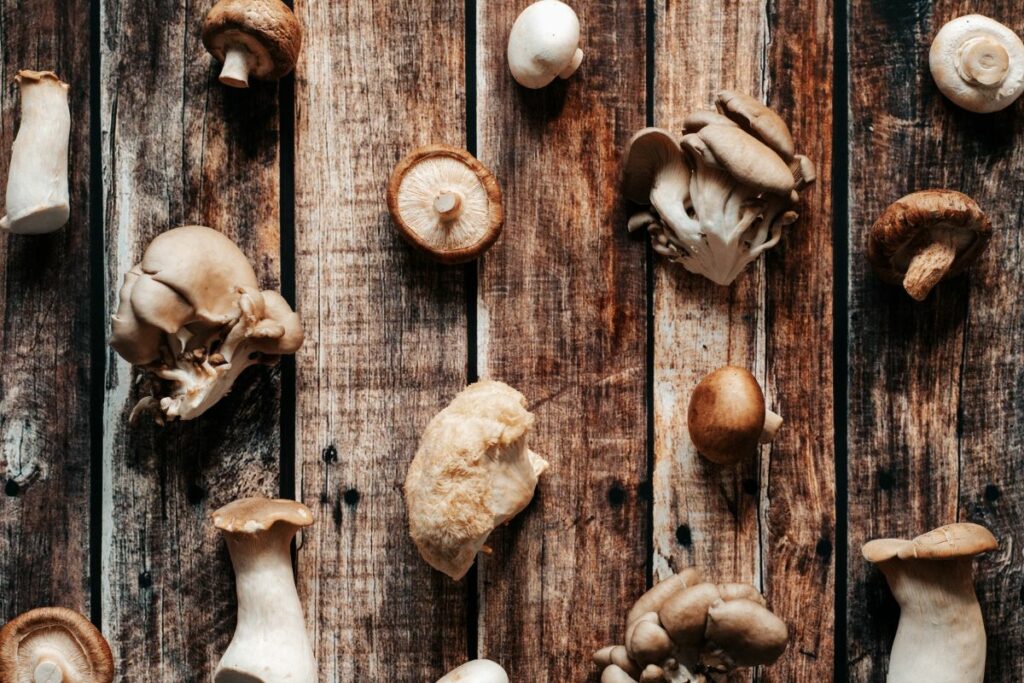
Exploring the world of mushrooms, you’ll find a diverse kingdom with varieties ranging from delicious delicacies to dangerous, toxic species. Understanding their characteristics is key to distinguishing between what’s edible and what could be harmful.
Edible versus Poisonous Mushrooms
Edible mushrooms are renowned for their nutritional value and are often used in culinary dishes. Varieties like Pleurotus, commonly known as oyster mushrooms, are highly sought for their taste and nutritional value. These mushrooms have structures called gills underneath their caps, which release spores and allow the mushroom to reproduce.
On the flip side, poisonous mushrooms can sometimes mimic their edible counterparts, which is why precise identification is vital. Always err on the side of caution and assume unidentified mushrooms are potentially harmful. Some poisonous species contain toxins that can cause severe symptoms or even be fatal if ingested.
Mushroom Identification
When identifying mushrooms, look for specific features to determine their category:
- Gills: These are the rib-like structures under the mushroom cap. Edible varieties often have gills that are free from the stem and do not leave a milky or colorful residue when touched.
- Teeth: Certain edible mushrooms have spines or teeth instead of gills, from which spores are released.
Identification is a careful and critical process as edible and poisonous mushrooms can have similar appearances. Always consult reliable resources or experts before consuming mushrooms you have harvested yourself.
Cultivation Practices
In cultivating mushrooms, understanding the symbiotic relationship between fungi and their growing medium is essential. Proper preparation of spawn and substrate, followed by precise cultivation techniques, ensures a successful harvest.
Preparing Spawn and Substrate
Your initial step is to prepare the spawn, the mycelium of the mushroom that acts as a seed. Sterility is crucial here; contaminants can outcompete your mushrooms. After that, select your substrate, the material on which your mushrooms will grow. Common substrates include straw, wood chips, or compost. Your main goal is to combine the spawn with the substrate in a controlled environment where you can adjust temperature and humidity to favor mushroom growth.
- Temperature: Each species of mushroom has an optimal temperature range, usually between 55-75°F (12-24°C).
- Humidity: Maintaining high humidity, around 85-95%, is often necessary for most mushroom types.
Cultivation Techniques for Growers
Once your spawn and substrate are united, you’ll move on to actual cultivation techniques. Remember: Consistency is key in maintaining the right conditions to help your mushrooms flourish. During the growth phase, regularly monitor and adjust temperature and humidity levels. For instance, oyster mushrooms require a temperature between 60-75°F (15-24°C) for the spawn run, and slightly lower for fruiting.
- Growing Mushrooms: Pay attention to the light, air exchange, and the absence of pests to ensure your mushrooms can grow undisturbed.
- Harvest: Harvesting should occur before the cap fully uncurls. This is when your mushrooms are at peak freshness and have the most nutritional value.
By closely managing these aspects of mushroom cultivation, you provide an environment that enables the fungi to draw nutrients from the substrate effectively, fostering growth and leading up to a successful harvest.
Mushroom Ecology and Symbiosis
In your exploration of mushroom ecology, you’ll find that mushrooms cultivate complex relationships within their environments. Their symbiotic connections to plants, known as mycorrhizal associations, are fundamental for mutual survival and ecological balance.
Fungal Networks and Plant Interactions
Fungi, including mushrooms, possess a mostly hidden yet immensely vital part known as the mycelium. This network of threads, akin to the roots of plants, extend throughout the soil and establish a symbiotic partnership with plant roots. In these mycorrhizal associations, your plants receive essential nutrients like phosphorus and nitrogen from the dense web of fungal mycelium, while the fungi, in turn, gain access to carbohydrates produced by plants through photosynthesis.
This symbiotic relationship is so critical that many ecosystems could collapse without it. Studies indicate that this interaction supports the growth of up to 90% of land plants, showcasing the key role of fungi in your ecosystem’s health. Not only do these networks enhance plant growth, but they also significantly increase the resilience of plants to environmental stressors.
Ecological Impact of Mushrooms
Mushrooms, the fruiting bodies of fungi, aren’t just there for reproduction; they’re also indicators of the ecological well-being of the environment around you. Spanning various ecological roles, mushrooms can be decomposers, breaking down dead organic matter; mutualists, as in mycorrhizal fungi; or even pathogens.
Through decomposition, mushrooms recycle vital nutrients back into the soil, providing the bedrock for new plant growth, which in turn supports a diverse range of wildlife. Fungi that form mycorrhizal relationships with plants are particularly beneficial to your gardens and forests, often improving plant vigor and survival, which has significant repercussions for carbon storage and climate regulation.
By understanding these complex interactions and the role of mushrooms within them, you gain insight into the profound interconnectedness of life and the necessity of conserving these biological networks for the future health of your planet.
Frequently Asked Questions
Mushrooms have a unique and complex relationship with their environment, with specific structures playing key roles in their ability to obtain nutrients.
How does the mycelium contribute to the nutrition of a mushroom?
The mycelium is a network of filaments essential for a mushroom’s growth, as it absorbs nutrients from the environment. It acts like a vast web, breaking down and assimilating substances which the mushroom then uses for nourishment.
What is the role of hyphae in the feeding process of fungi?
Hyphae are the thread-like structures that comprise the mycelium, reaching out into the mushroom’s growing medium to release enzymes that decompose organic material. This process turns complex molecules into simpler compounds the fungus can absorb.
In the fungal life cycle, at what stage and how is nutrition acquired?
During its vegetative stage, a fungus expands its mycelium to consume nutrients from its surroundings. This phase is essential for gathering the energy required for the development of the reproductive structures, or fruiting bodies, which we recognize as mushrooms.
What distinguishes the nutritional mode of fungi from that of plants?
Unlike plants, which harness energy from sunlight through photosynthesis, fungi are heterotrophs. They must absorb nutrients from their environment, often via enzymatic breakdown of organic materials, making them decomposers within ecosystems.
How does a mushroom’s structure facilitate its method of nutrient absorption?
The structure of a mushroom, specifically its extensive mycelium network, maximizes surface area contact with the substrate. This allows efficient secretion of enzymes and absorption of released nutrients from the substrate into the fungus.
Can you explain the importance of the cup fungus structure in relation to its nutritional needs?
Cup fungi possess a distinctive shape that allows them to efficiently collect spores for reproduction. This structure plays less of a role in nutrition directly; however, it supports the lifecycle of the fungus, ensuring the continuation of the species and, by extension, the mycelium’s nutrient absorption capabilities.

